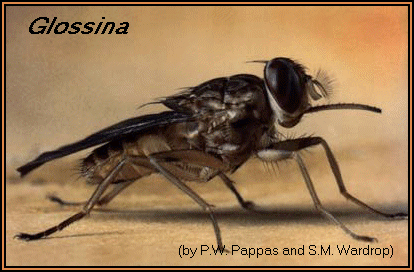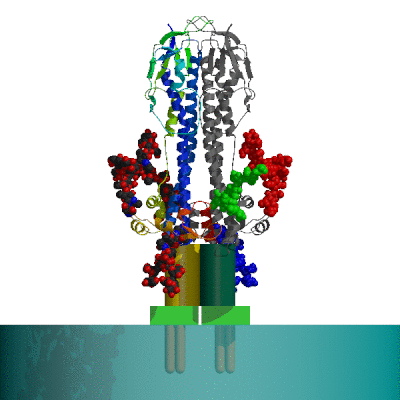

This web page was produced as an assignment for an undergraduate course at Davidson College.
EVASION
Tsetse fly vector and VSG model


Because Trypanosoma brucei are transmitted via a bite from a tsetse fly, some inflammation does occur and a chancre may develop; however, in general the parasite is able to evade the both the innate immune response and all of the elements of the adaptive immune response. The penetration of the skin by the fly gets the pathogen past the first barrier and because it is covered with a "dense layer of 10^7 identical variant-specific surface glycoproteins (VSGs) that are replaced regularly by new antigenic types" (journal of infectous diseases 2004 ). Because these VSGs are glycosylated, membrane-anchored proteins (attached to the trypanosome membrane by a GPI (glycosylphosphatidylinositol) anchor they are impossible to remove and impossible for the host immune system to get around. Thus the pathogen is able to evade the phagocytotic leukocytes and complement cascade of the early response as well as the overly specific B cell antibodies and cytotoxic T cells. It is possible that there would be an NK cell response, but it does not act fast enough to eliminate the pathogen before it invades the bloodstream and flows throughout the entire body. As Trypanosoma brucei is a blood parasite, in the blood stream is where it stays and proliferates so it infects most of the organs of its host. Some of the most comon symptoms are fever, rash, anxiey, disorientation, swollen lymph nodes, headache, insomnia or increased sleepiness, mood swings, coma, and eventual death.
IF LEFT UNTREATED, AFRICAN SLEEPING SICKNESS IS FATAL.